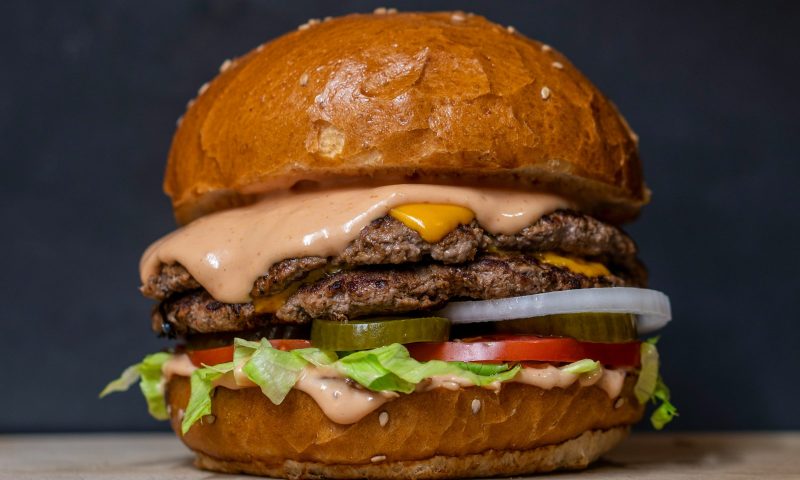
Burger season is upon us. With all the seaside picnics, backyard barbeques, and sunset dinners on the lake fast approaching, it’s time to finally learn what makes a really good burger. Now, we’re not here to debate the best method for cooking burgers—that’s for another day. Whether you prefer your burger grilled, broiled, seared in a cast iron pan, or pressed on a flattop, these tips are guaranteed to give you the best burger bang for your buck.
Use the right ground beef

When it comes to making burgers, almost everyone has their own hot take on what makes the best version. When there are so many elements up for discussion – cooking methods, seasonings, buns, toppings – it makes sense. We’d argue, though, that the very essence of the burger is the meat itself and, therefore, the element that should be focused on the most.
If there’s one rule about cooking, it’s that fat equals flavor. Slimmer waistlines and the most heart-healthy options, no. But flavor? Absolutely. Because leaner ground beef is usually more expensive than its fattier counterparts, some people tend to think that this is the better burger choice, which is entirely incorrect. That sinfully moist, juices-running-down-your-arms, deliciously tender bite of burger we all know and love? That comes from fat.
Our favorite choice for burger patties is ground beef, with at least 20% fat content, if not 25%.
Some might argue that a burger made with leaner beef holds its shape better, which is true. But I’d much rather eat a deliciously sloppy burger that tastes like heaven than a hockey puck with a nicer shape.
Keep everything cold

What do a buttery, flakey, delicious homemade pie crust and a plump, juicy, tender, meaty burger have in common? To make both of these comfort food favorites perfectly, all of the ingredients must be kept cold. This is because heat is the enemy of fat, and – don’t forget – fat is flavor. Just like you don’t want your butter melting away within a pie crust, you definitely do not want the fat to run out of your burger meat.
When shaping room-temperature hamburger patties with warm hands, the fat inside will become soft and pliable, sticking to your hands and any work surfaces you’re using, like a cutting board or bowl. Be sure everything is properly chilled before shaping your patties, including the container you’re storing them in.
If you’re grinding your own meat for burgers (bonus points if you are!), the cold rule also applies to all of the equipment you might be using. Chilling your meat grinder attachment in the freezer for a few hours is a great way to ensure everything stays nice and chilly.
Be gentle

Season generously, but at the right time

For those of us who were taught to “season as you go,” this rule is a bit tough to remember, but absolutely crucial for burger perfection. Be generous with your seasoning on your burger patty, but only just before cooking. Salt, while essential for flavor, dissolves the muscle proteins in ground beef, which – when left to sit too long – will create a springy, sausage-like texture in your burgers. It’s best to season just before your meat hits the heat.
Think about your buns

As we’ve already established, the star of the hamburger is, undoubtedly, the meat itself. However, no star shines brightly without the help of its supporting cast, the most important in this case being the bun.
Sure, we’re all guilty of hastily grabbing the two-dollar, grocery store-brand package of hamburger buns and calling it a day, but this is truly a crime to that delicious burger you’ve just taken so much care in prepping. After all, burger buns come in all shapes, sizes, and flavors to perfectly accent and compliment your burger. Take a little time to consider what kind of burger you’re making, and which bun would be best. Is your burger a deliciously greasy flat-top version topped only with griddled onions? Then you might opt for a softer bun that has a bit more squish to its shape. Perhaps a tall, pub-style burger is on the menu, complete with tons of toppings and a tall, hearty patty. In this case, you might want a sturdier bun that can stand up to such juicy intensity, like a sourdough or even pretzel bun. Have fun with it!



